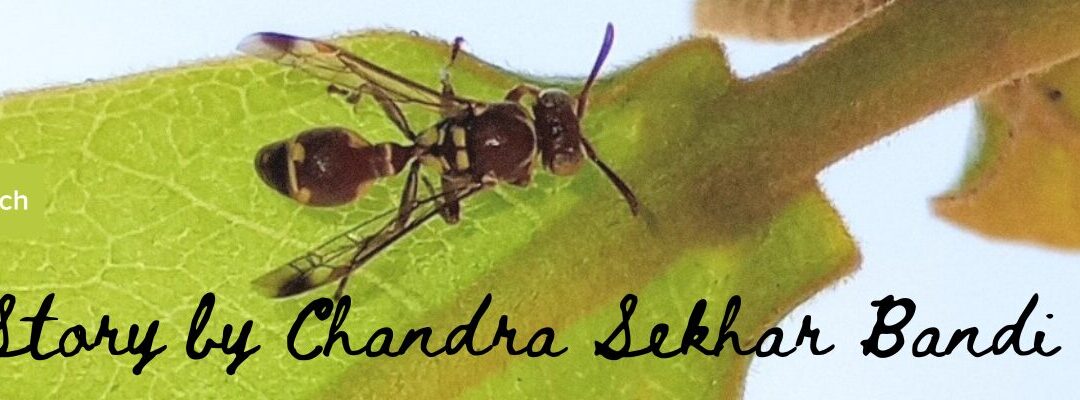On a sunny morning during the lockdown, I was roaming around my home documenting life using the iNaturalist application. Castor plants grow wild and abundant across Bangalore and there was one growing in a small patch of land next to our home. While watching the plant I noticed wasps and ants busily roaming around the plant. What caught my eye was a beautiful wasp that landed near the base of the leaf, did something and flew off. It returned to another leaf and did the same. While I was curious about this, I observed that ants were busy visiting the same spots moving up and down the stem visiting many such spots.
On observing closely, I noticed some ‘pits’ or depressions where these insects are landing. Further observation revealed that these pits have some liquid that is attracting the insects. Much to my amusement, the pit filled up within no time and another variety of wasps came to this watering hole. At one point there was a competition between wasps and ants for these sweet spots. Google search and some asking around helped me understand that I was looking at what scientists call ‘Extra Floral Nectaries (EFNs)’.
Like most of us, my idea of nectar in a plant is limited to the flowers of a plant. After my chance encounter, I was fascinated to learn that there are plants that can produce sweet nectar-like liquid in non-flowering parts. Similar to nectar, these secretions contain sugars, amino acids, carbohydrates and proteins. Once I learnt this, I discovered that some more urban plants have EFNs. No wonder there are more than 4000 species of plants that have EFNs!
So what exactly is an EFN? The non-flowering parts of a plant that host sweet sugary liquid in one or more areas of a plant that do not aid in pollination can be considered EFNs. A variety of plants have interesting places where they have EFNs. While some plants have EFNs at the petiole, some have them at the leaf base, some have them between leaflets, at the lamina, and some have special glands for EFNs! Some plants have more than one EFN-producing part spread across.
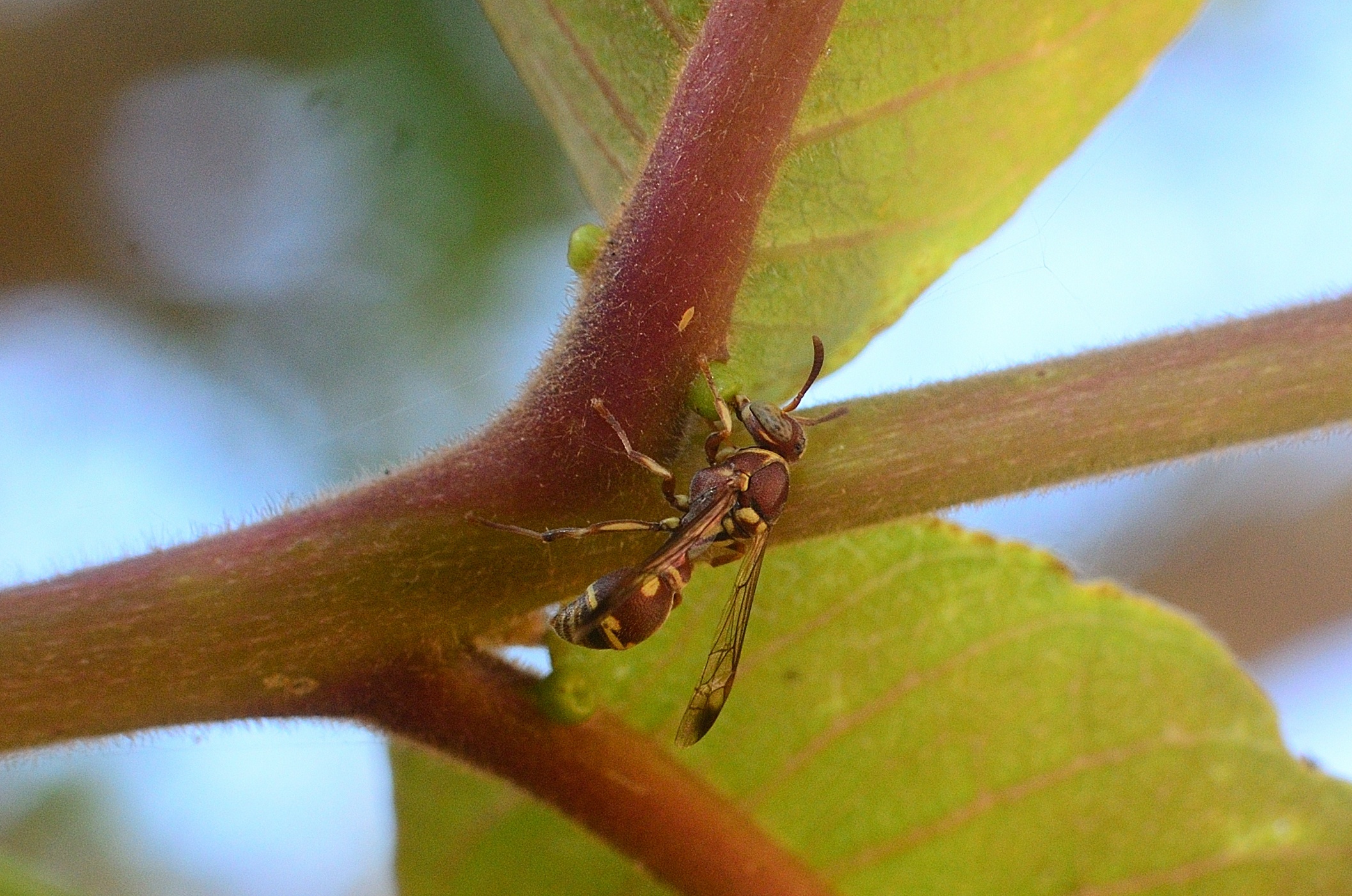
A Ropalidia species wasp feeding on EFNs of Terminalia catappa
Knowing that pollinators visiting flowers for nectar benefit the host by pollinating, one might wonder why plants need EFNs if their primary needs of pollination are met. Is there an additional benefit the plants have, especially since they are not part of flowers? Scientists believe that EFNs are an evolutionary development in flowering plants in order to attract arthropods that can protect them from herbivore grazing and other predators. While wasps and other insects visit the EFNs, ants are known to be one of the common arthropods that plants recruit with the help of EFNs.
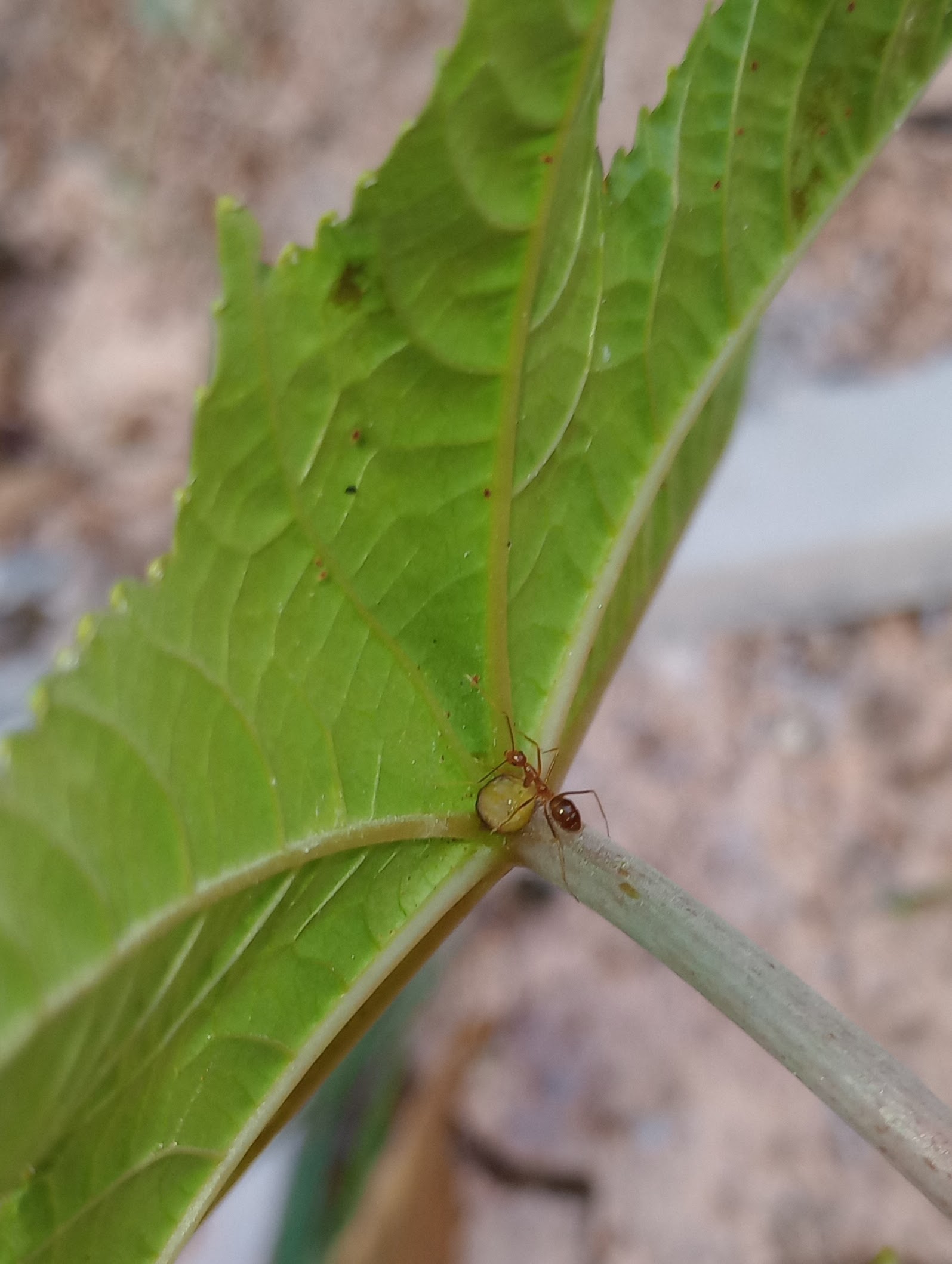
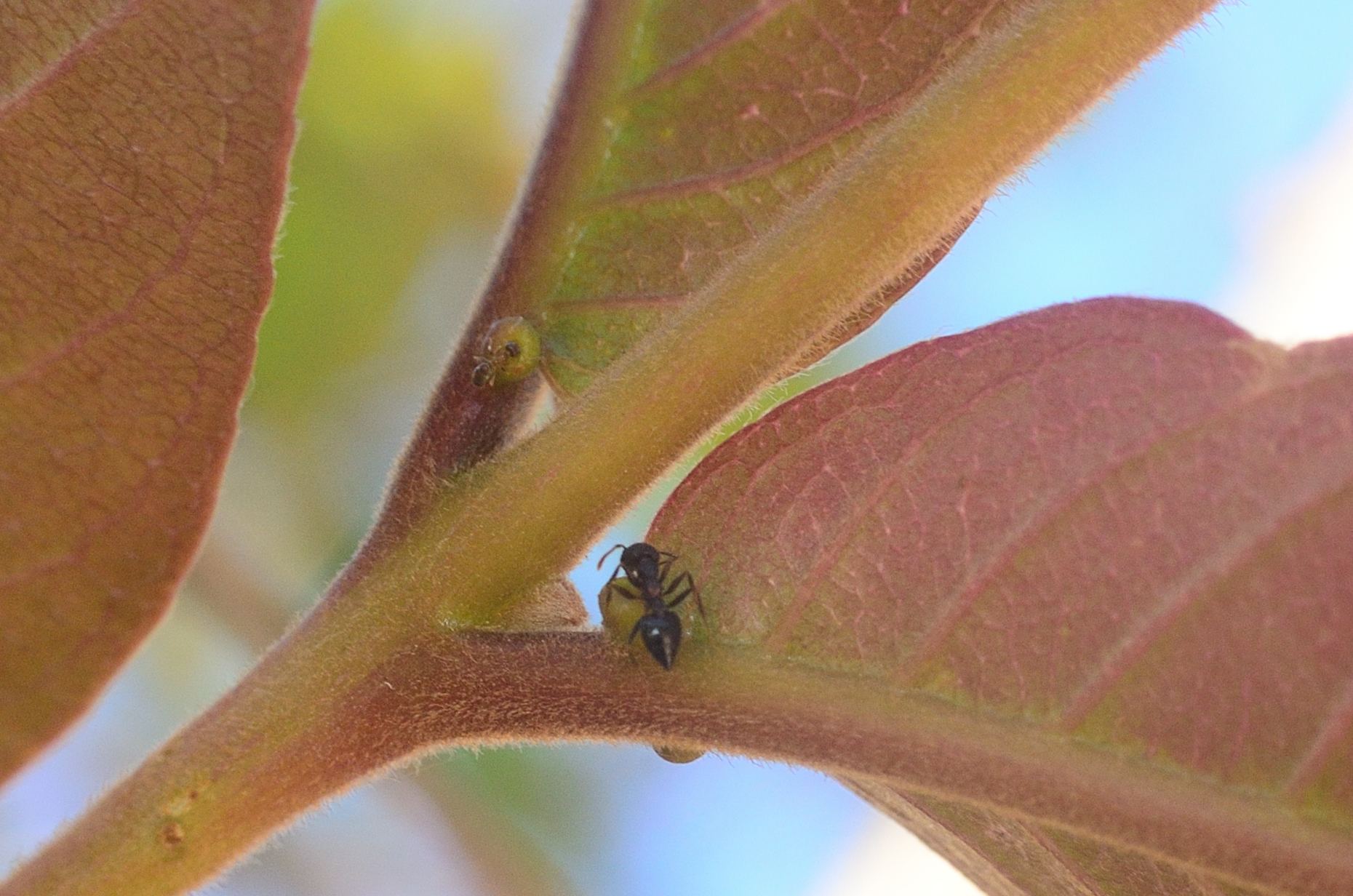

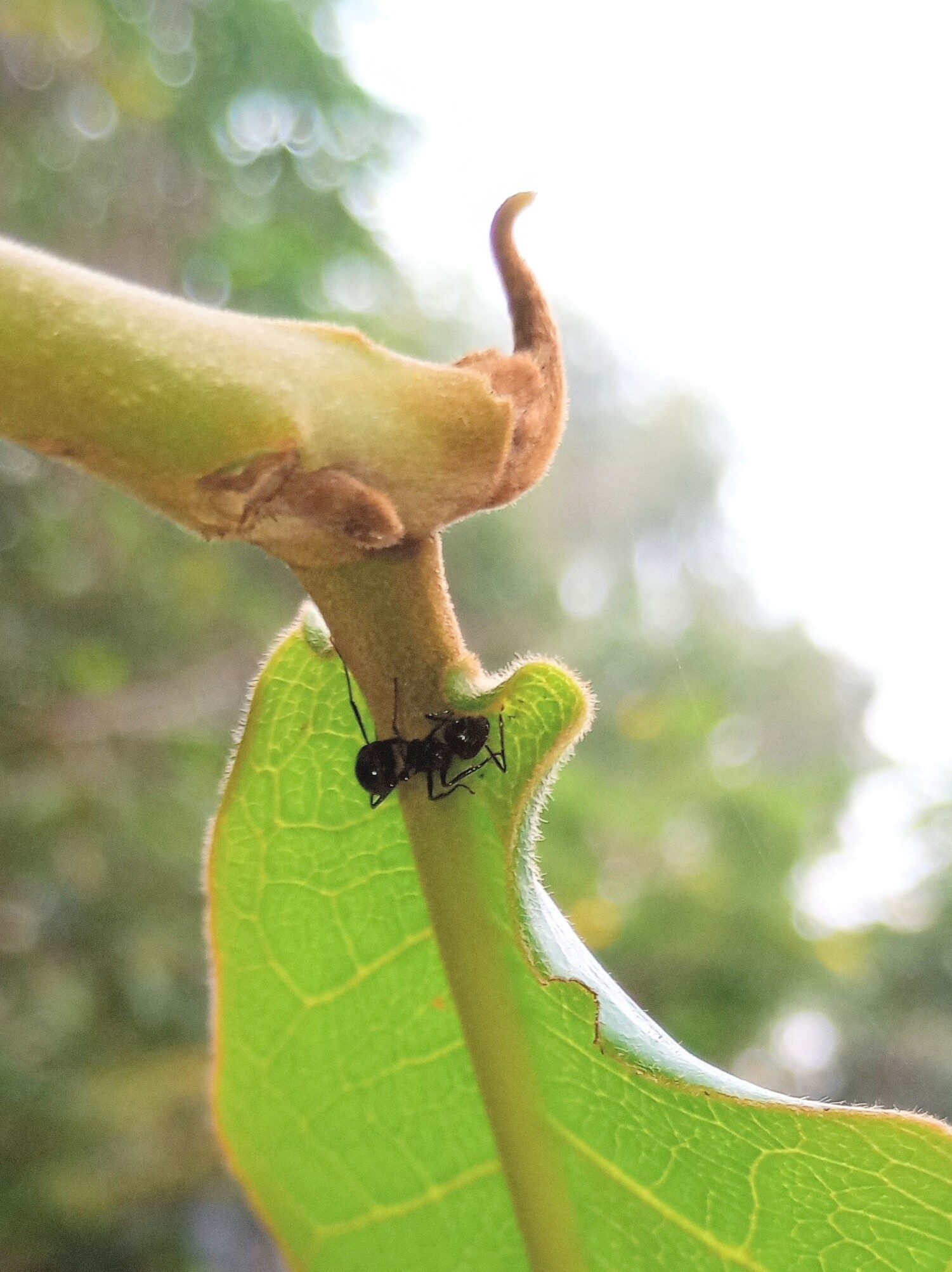
Variety of ants on EFNs of Castor and Terminalia species
It’s interesting to know that EFNs are not a new discovery. The oldest fossil with EFNs dates back to the Oligocene epoch (33 – 23 million years ago). Darwin and his son were fascinated by EFNs as early as 1876. Interestingly what caught the attention of Darwin is the presence of these on the ferns that predate flowering plants and have very few herbivores! They hypothesized that since only young fronds of ferns have EFNs and the fact that they stop producing sugary syrup later, the intent of ferns having them is to protect the young fronds from any threats by leveraging the ants. That also raises an interesting question of whether EFNs predate flowering plants and some research shows that EFNs in ferns had a convergent evolution with a delay of 100 million years compared to flowering plants
Among the 4000+ species of Angiosperms that were recorded to have EFNs, 24% of them are found on plants belonging to Fabaceae (pea family) and ants and Fabaceae mutualism seems to be a popular fact. This family is closely followed by Passifloraceae (452 species), Euphorbiaceae (353 species), Malvaceae (321 species) and even 100 species of Orchidaceae family seem to have EFNs. Some studies found that trees with EFNs that recruit ants and other arthropods for protection can in turn aid the non-EFN producing plants around them.
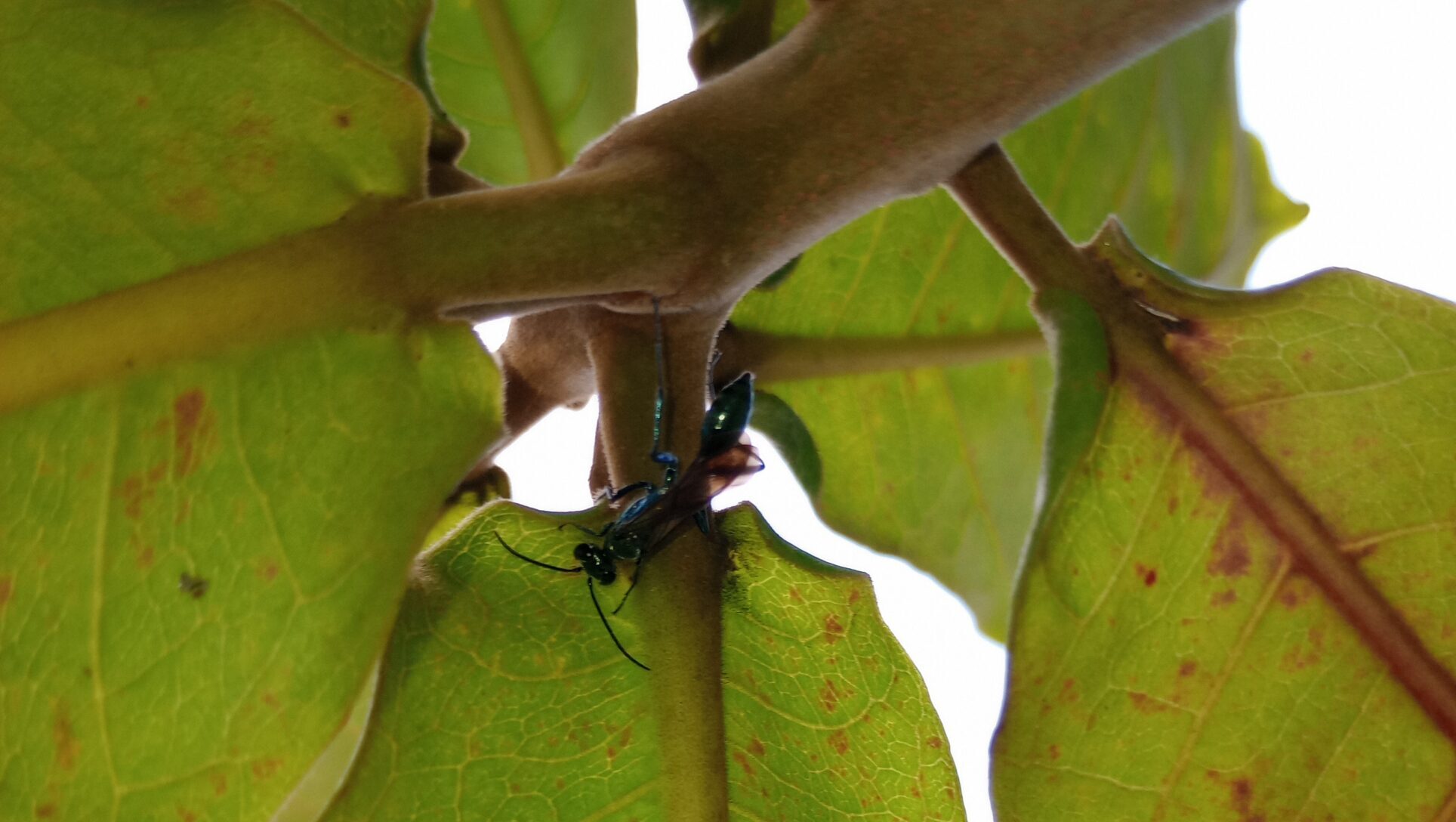
A mud-dauber wasp feeding on nectar from EFNs of Terminalia catappa
While protection from grazing due to the presence of ants attracted to EFNs seems to be one of the benefits of EFNs, recent studies found other interesting benefits. Parasitic wasps that aid in biocontrol in cotton seem to find EFNs as a good source of food, detecting EFNs by the odour. Predatory insects like Assassin bugs and ladybugs were reported feeding on EFNs apart from spiders, ants and parasitic wasps thus benefiting the plants from natural enemies like mites, aphids etc.
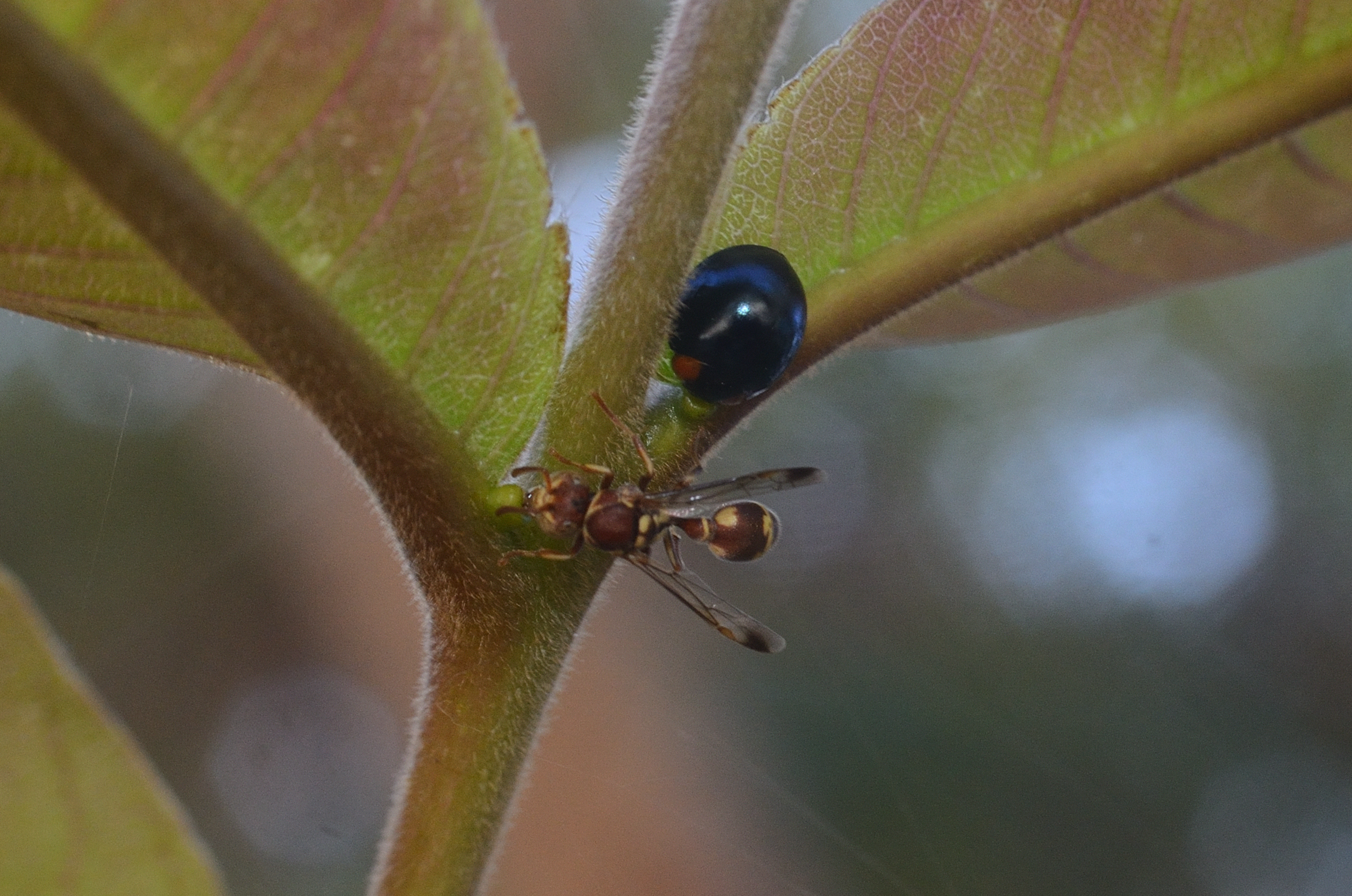
A Ropalidia sp. Wasp and a ladybug feeding on EFNs
In case you are wondering how this information helps us, amateur naturalists or plant lovers, let me share my perspective. I find this as a cheat code for spotting insects and their interactions. Instead of walking around looking for some insects, I can stay put under a Terminalia species, a Passiflora or a Castor plant and wait for some wasps and ants to turn up at these watering holes thus making it a fulfilling time out in nature. I also learnt that EFNs’ location and shape can help differentiate/identify species of plants in addition to other identification pointers. I had seen some cool wasps, beetles, ants and even honey bees feeding from the EFNs.
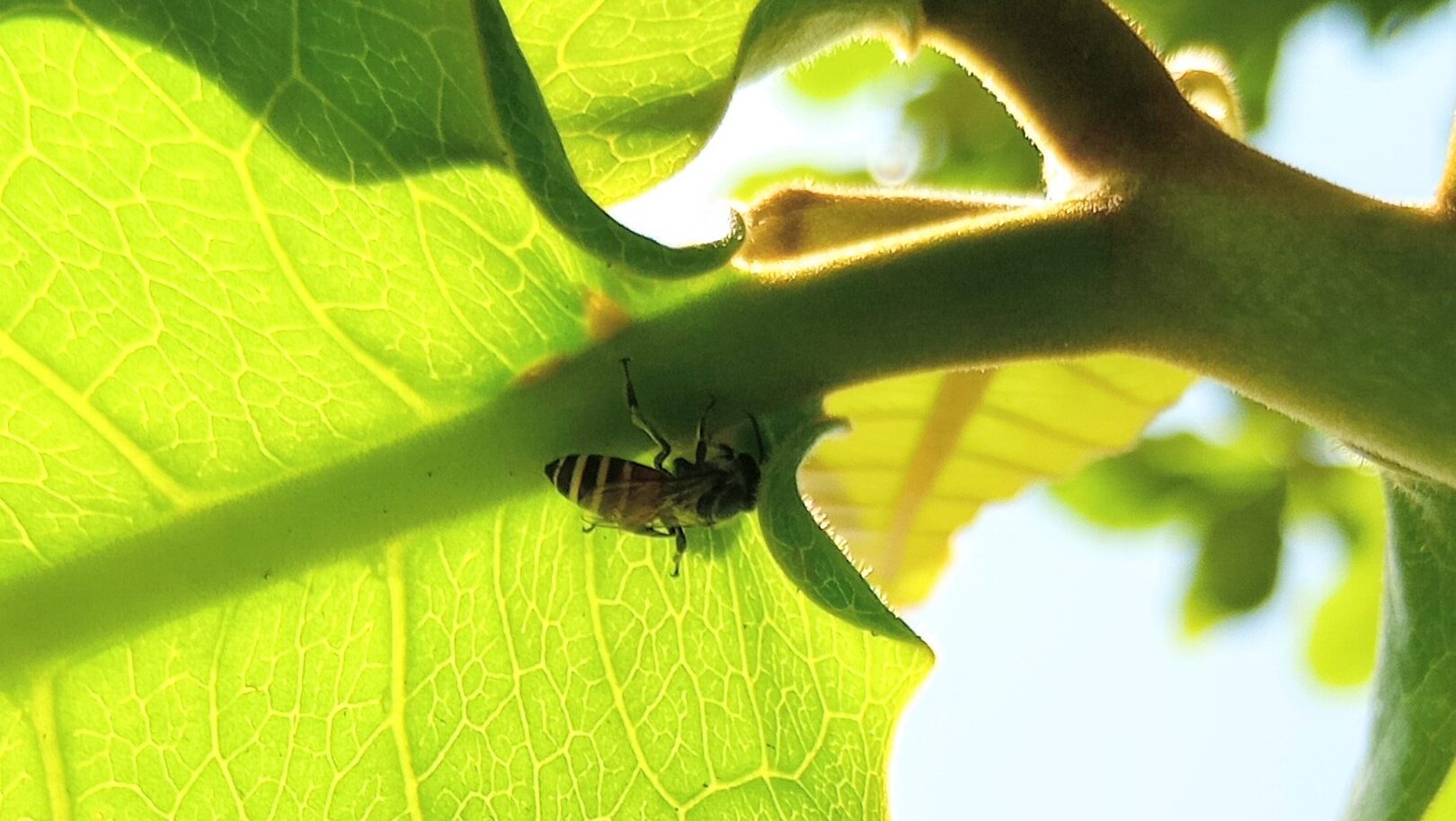
An Apis florea species bee feeding on EFN of Terminalia catappa
There is a potential opportunity to study/research more on EFNs. Their evolution and association with a variety of arthropods can reveal more interesting facts. As additional plant species having EFNs are being discovered and added to the global database, interesting studies like these prove that EFN benefits are plausible. Nevertheless, for curious naturalists, this is yet another meditative aid for the outdoors!
All photos by Chandra Sekhar Bandi
About the Author: Chandra Sekhar Bandi is a nature enthusiast interested in spending time outdoors. He enjoys observing and learning about the interconnections in nature and likes sharing the fascinating stories of nature with adults and kids on nature walks.

